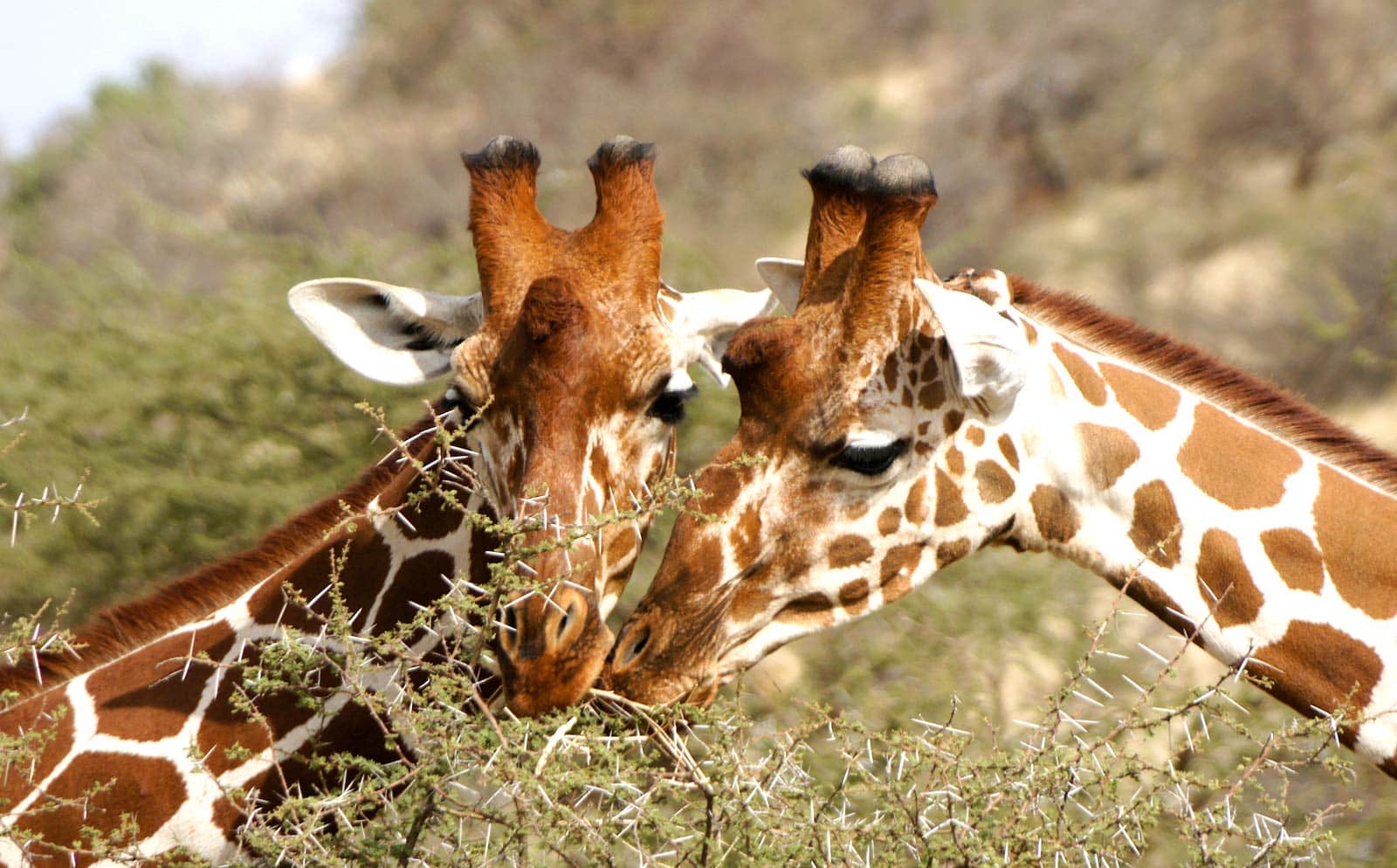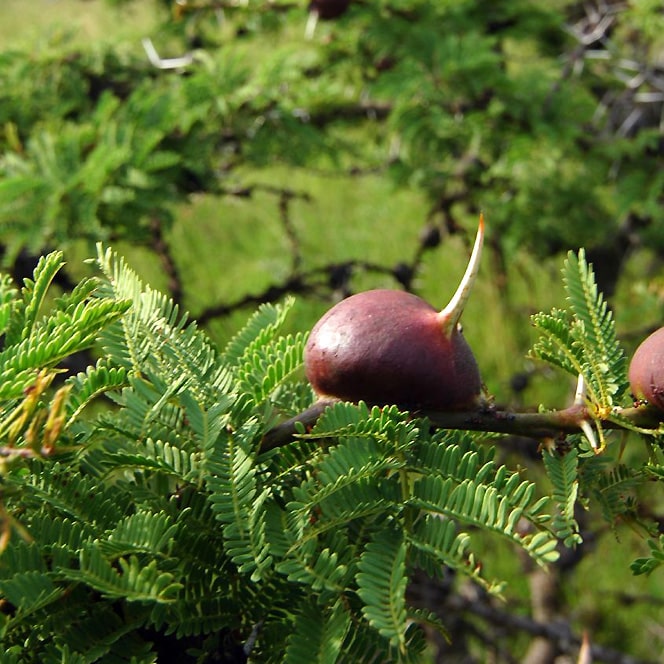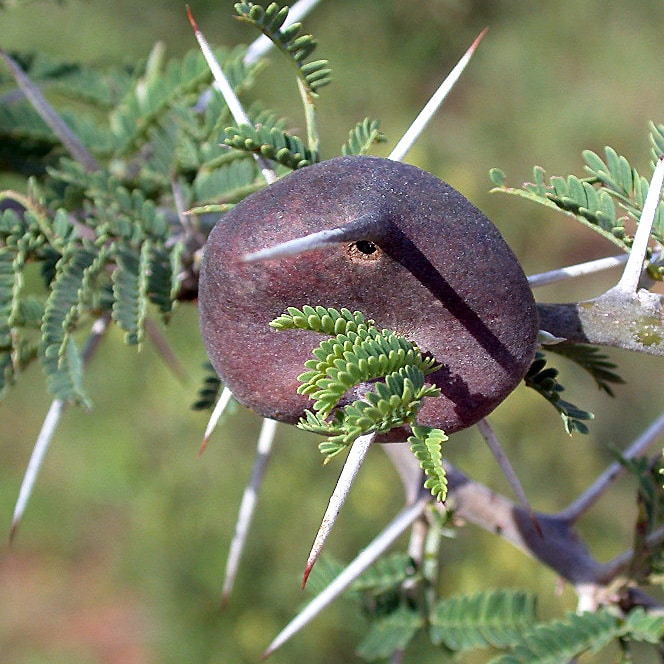





Location: Serengeti
Tree: Whistling Thorn Acacia Tree
Animal Species: Elephants, Giraffes, Ants, Beetle larvae and Secretary birds
And: Tannins and Ethylene
The Tree
The Whistling Thorn Acacia tree which can grow about 18 feet tall, has large modified thorn pairs about 3 inches long that are joined at the base by a hollow bulbous swelling up to 1 inch in diameter.
The tree protects its flowers from being eaten by the ants by producing a chemical that is a repellant to the ants but has aromatic compounds that attract bees.Some acacia trees produce a versatile gum that is used medicinally in the production of many items and other industries.
The whistling acacia produces long seed pods that are very nutritious for animals and humans.
The Beetle Larvae
Bark-boring beetle larvae create holes in the bulbs of the thorns, so ants turn the swollen bulbs into their homes.
When the wind blows across those holes it produces whistling sounds like hundreds of flutes, often creating an eerie sound, like when you blow across the top of a bottle. Hence the name ‘whistling thorn tree’.
The Ants
Four species of ants live symbiotically on the trees with the cocktail ant species making their nests in the bulbs. Sometimes up to 20,000 ants are on one tree.
If one species of ant make contact with a colony on another tree, they will fight, with the loser being evicted from its tree.
The tree has developed special glands at the tips of its leaves that produce a sweet secretion just for the ants so they have food.
The ants produce little entrance doors in the hollowed-out bulbs that the larvae have created.
The Elephants
Elephants hate that eerie whistling sound that is made when the wind blows over the bulbs, and are scared off. And elephants won’t approach an acacia tree that is buzzing with bees on its flowers, as they hate that sound too.
But if an elephant approaches a tree when the wind isn’t blowing there is no sound, sit it can approach the tree. But if the elephant starts to eat the tree, the ants can get inside their trunks and bite and sting the elephant.
The Giraffes
Giraffes love the acacia tree leaves but of course, the tree doesn’t want to be eaten. A giraffe’s tongue can manoeuvre in between the many thorns on the tree to scoop leaves into its mouth. But when the ants feel that vibration they realise there is a giraffe there and go into battle coming out of the bulbs ready to attack. They climb onto the giraffe in any way they can and start biting.
If a giraffe eats too much, the tree sends out a nasty tannin to the leaves and that makes the giraffe stop eating them as they taste awful. The tree can also sense the giraffes are eating too much as the giraffe starts to dribble over the tree, as the hungry giraffe produces more saliva.
Tannins
Overgrazing by giraffes activates the trees’ defence mechanism and prompts increased production of these tannins. It’s likely that giraffes usually avoid such bitter-tasting leaves, but they will eat them when they have no other choice.
But the tannins inhibit the giraffe’s ability to digest food leading to giraffes in poor condition and weaker calves that are less likely to survive and more likely to succumb to lion predation.
Ethylene
When the acacia tree is under attack from giraffes, elephants or antelopes, it emits ethylene into the area which travels up to 150 feet to alert other nearby trees of the predators so they then start producing tannin.
Within 15 minutes, all the neighbouring trees increase the levels in their leaves. So giraffes tend to eat downwind from trees in the hope that the trees do not alarm each other.
Secretary Birds
The Whistling Thorn Acacia Tree is also home to a unique bird of prey. With the body of an eagle and the long legs of a crane this endangered species has a wingspan of over 2 metres, build large nests in the Acacia trees made from long, flat twigs and grass and can measure 2.5 metres wide.
Secretary birds possess an incredibly powerful kicking ability which they use to kill their prey.
So when you see a tree, just remember, there’s probably a lot more going on, so take the time to look closely and see what other species are there too.

Please select a template first

